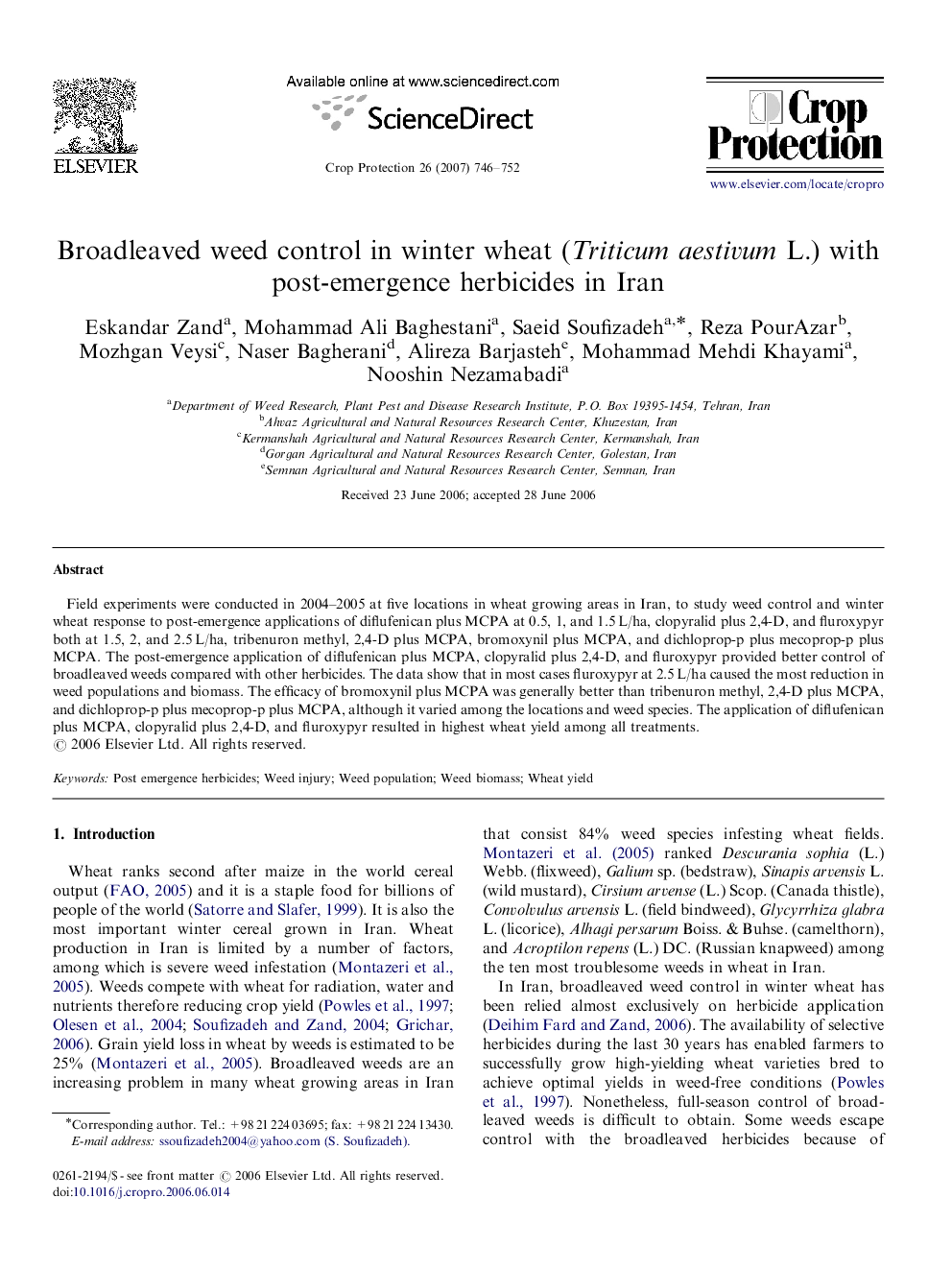| Article ID | Journal | Published Year | Pages | File Type |
|---|---|---|---|---|
| 4507228 | Crop Protection | 2007 | 7 Pages |
Field experiments were conducted in 2004–2005 at five locations in wheat growing areas in Iran, to study weed control and winter wheat response to post-emergence applications of diflufenican plus MCPA at 0.5, 1, and 1.5 L/ha, clopyralid plus 2,4-D, and fluroxypyr both at 1.5, 2, and 2.5 L/ha, tribenuron methyl, 2,4-D plus MCPA, bromoxynil plus MCPA, and dichloprop-p plus mecoprop-p plus MCPA. The post-emergence application of diflufenican plus MCPA, clopyralid plus 2,4-D, and fluroxypyr provided better control of broadleaved weeds compared with other herbicides. The data show that in most cases fluroxypyr at 2.5 L/ha caused the most reduction in weed populations and biomass. The efficacy of bromoxynil plus MCPA was generally better than tribenuron methyl, 2,4-D plus MCPA, and dichloprop-p plus mecoprop-p plus MCPA, although it varied among the locations and weed species. The application of diflufenican plus MCPA, clopyralid plus 2,4-D, and fluroxypyr resulted in highest wheat yield among all treatments.
